Must Try Fruit In Colombia
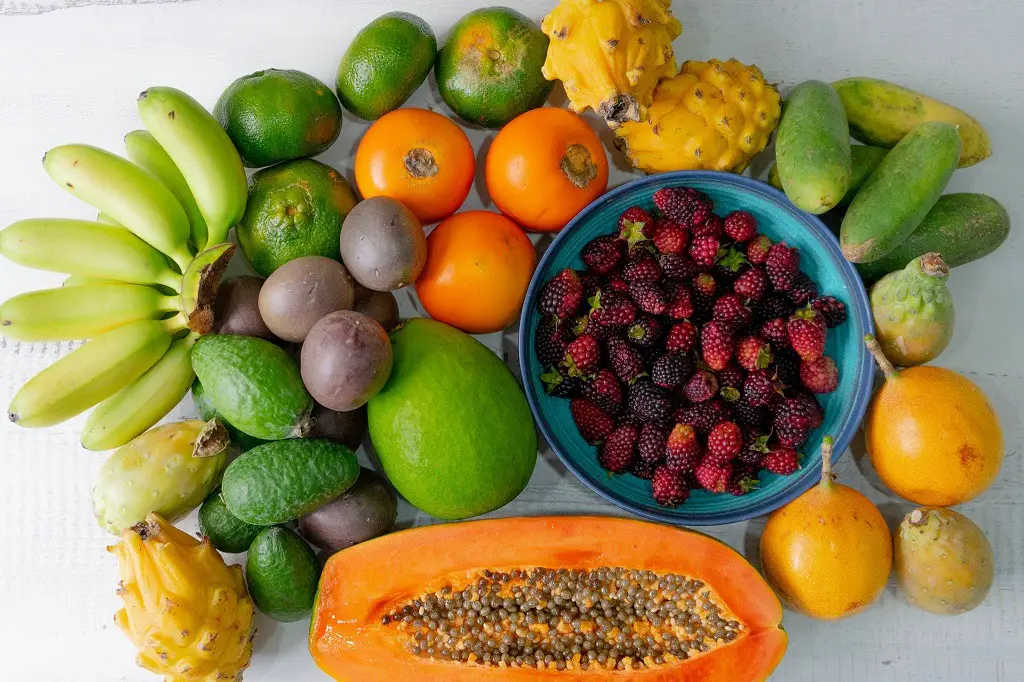
One of the best benefits of being an equatorial country is the plethora of amazing tropical fruits available year round. If you are visiting Colombia, you should try as many delicious and unique fruits as possible. While this list of must try fruit in Colombia is by no means definitive, it is a good base of some of the most popular exotic fruits in this beautiful country.
If you are visiting Colombia and want to try many different fruits, you should make a plan to visit the main fruit market halls in the city. Each city has a ‘mercado’ that is similar to the wet markets you will see in South East Asia, however I did find the ones in Colombia to be a lot less hectic.
Here are some of the most popular mercados to get fruit in Colombia:
Bogota: Plaza de Mercado de Paloquemao
Medellin: Central Mayorista de Antioquia
Cartagena: Bazurto Market
Cali: Galeria Alameda
Santa Marta: Mercado Público
Must Try Fruit In Colombia
Lulo (Solanum quitoense)
Perhaps one of the most popular fruits in Colombia, Lulo, also known as the naranjilla, is a member of the nightshade family. It resembles an orange tomato, and it’s inside is divided into four quadrants. I found the flavor to actually be quite tomato-y but with more citrus notes.
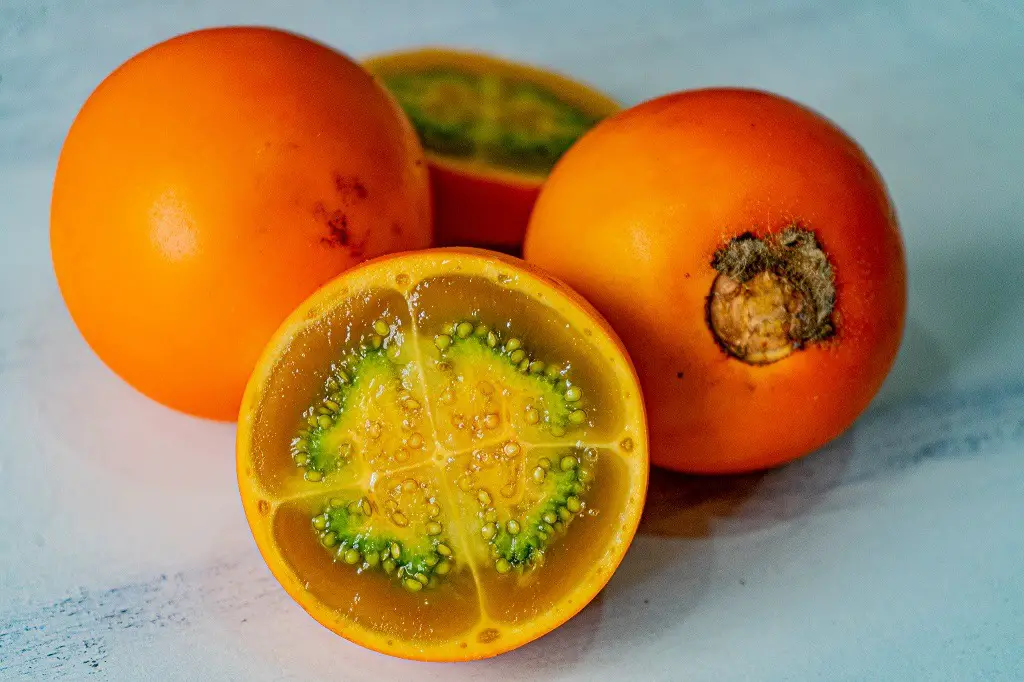
You can of course eat the lulo raw, but it is also a very popular smoothie in Colombia, where you can get it in many restaurants and street vendors.
Banana Passionfruit
The banana passionfruit is a fruit I had never even heard of before coming to Colombia. It looks from the outside a bit like a small, green banana, but when you cut it open it is clearly a part of the passionfruit family.
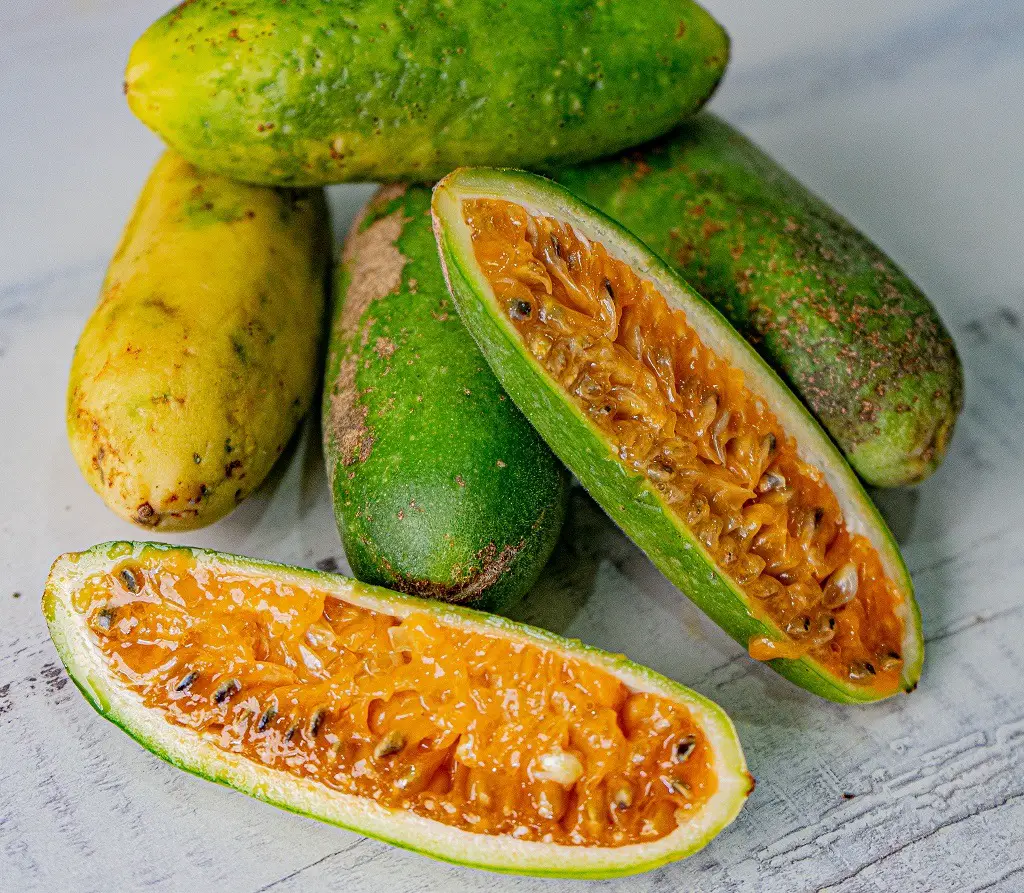
Known as Curuba in Latin America, the best way to eat this unique fruit is by slicing it in half and using a spoon to scoop out the delicious insides. It is a bit sour, so I like to sprinkle a bit of sugar on the halves before scooping out the pulp. Another benefit of the curuba – they are filled with antioxidants making this one of the healthiest fruits to eat.
Mora (Rubus glaucus)
The Mora, aka the Andean Blackberry, is a high altitude berry that is popular as a smoothie or as a pie filling. You can eat them raw right from the plant, but I find them to be a little too sour to enjoy that way.
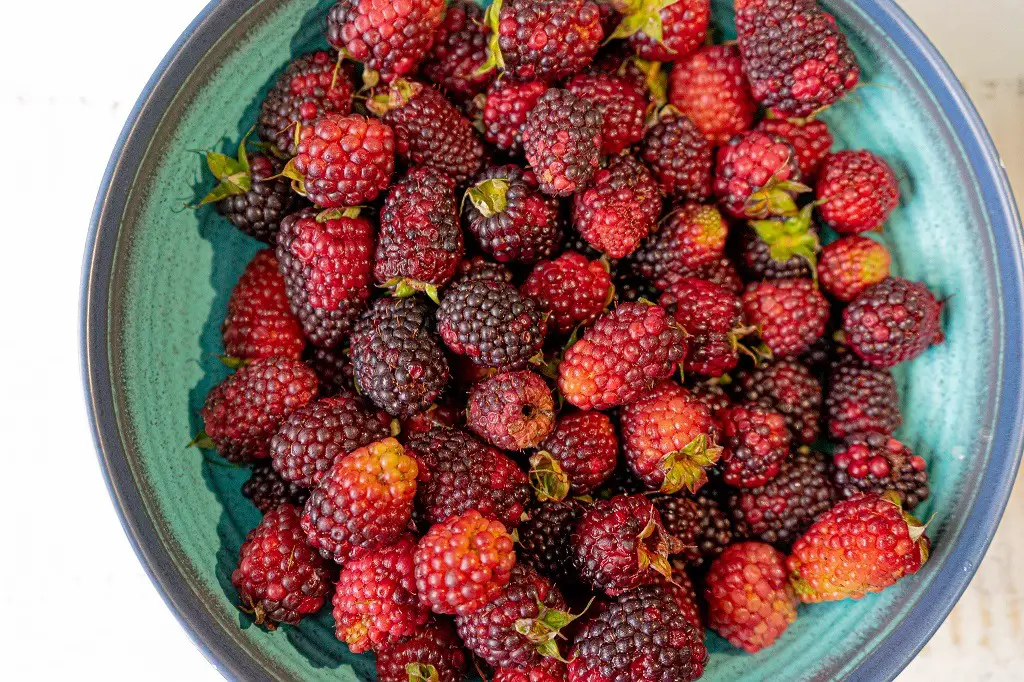
One of the best things I ate in Colombia was a New York style cheesecake with a mora berry sauce, as the tartness of the berry greatly complimented the sweet and fat of the cheesecake.
Pitahaya (Selenicereus megalanthus)
The Pitahaya is a member of the dragonfruit family, however it’s not the red and green version you might be used to from South East Asia. The pitahaya, or yellow dragonfruit, is in my opinion much tastier.
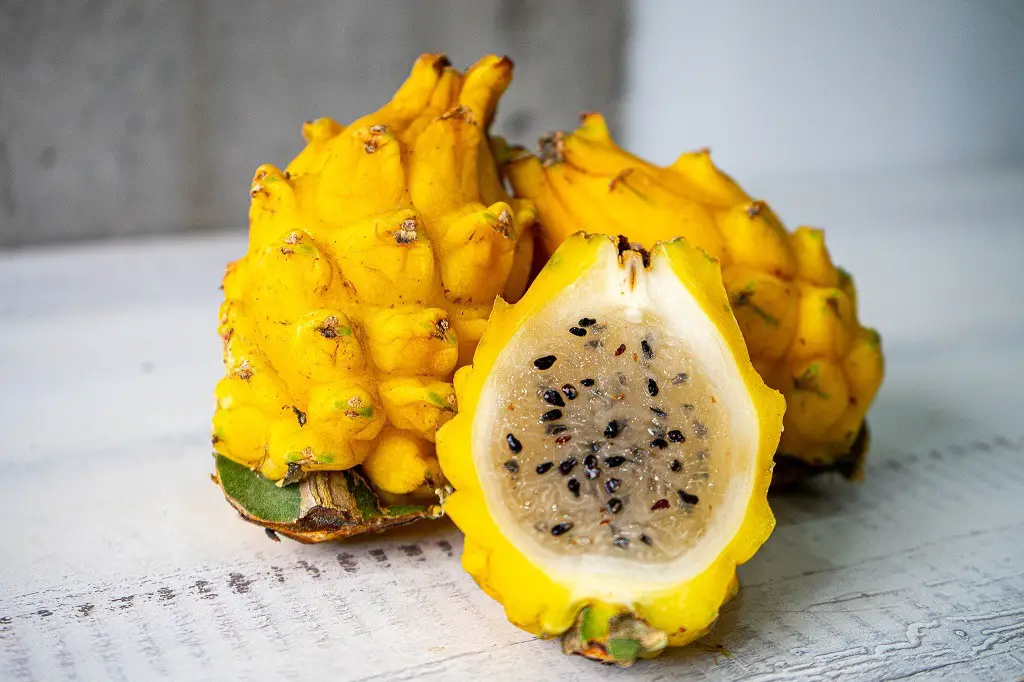
These are found pretty much all over the country and make a great snack. Just slice one in half and use a spoon to eat the white flesh. The yellow pitahaya is very sweet and extremely refreshing, with a creamier texture than its Asian counterpart.
Banana Bocadillo
If you’ve only ever tried large Cavendish bananas then you are seriously missing out on what a delicious banana can taste like. In Colombia, the banana bocadillo, also known as lady finger bananas or sugar bananas, is one of my favorite things to eat. These are quite small, however they tend to last longer without spoiling than the Cavendish variety.
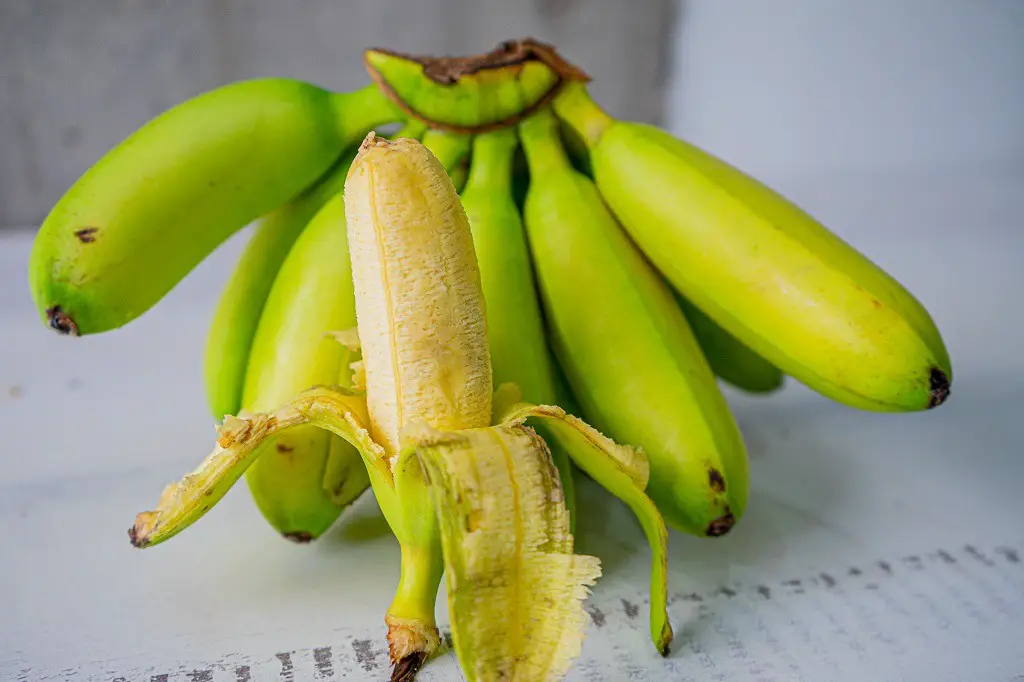
These bananas are sweeter than most other bananas and are commonly used in smoothies and desserts. They are quite similar to the small finger length bananas you might see in South East Asia.
Gulupa (Passiflora edulis)
The gulupa, or purple passionfruit, is one of the most important fruits in Colombia. In fact you can find this fruit being sold in a variety of ways; from fresh to juices, in jams or desserts it is one of the most versatile Colombian fruits.
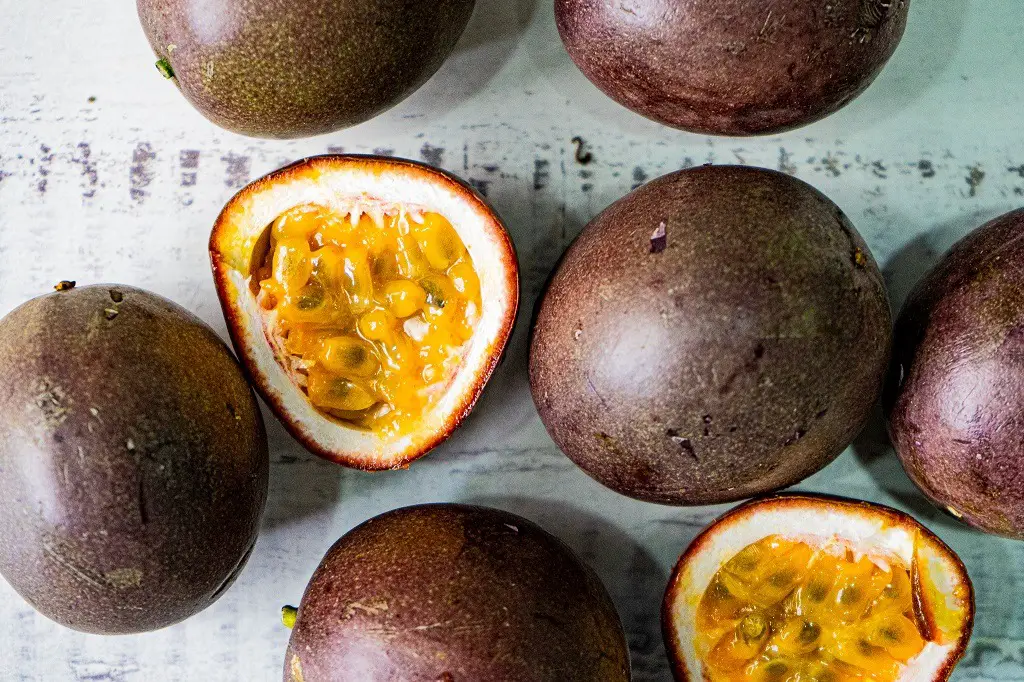
The gulupa is also one of the more sour passionfruits so if you were looking for the more internationally popular maracuya flavor, that is actually the passiflora edulis f. Flavicarpa variety.
The best way to eat the gulupa in my opinion is to cut one in half, and sprinkle a bit of sugar in the half before scooping everything out with a spoon.
Feijoa (Feijoa sellowiana)
The feijoa, also called the pineapple guava, is neither a pineapple nor a guava, however it does smell like both (in my opinion). The feijoa is not a large fruit, about the size and shape and color of a small avocado, but the inside is much more guava like.
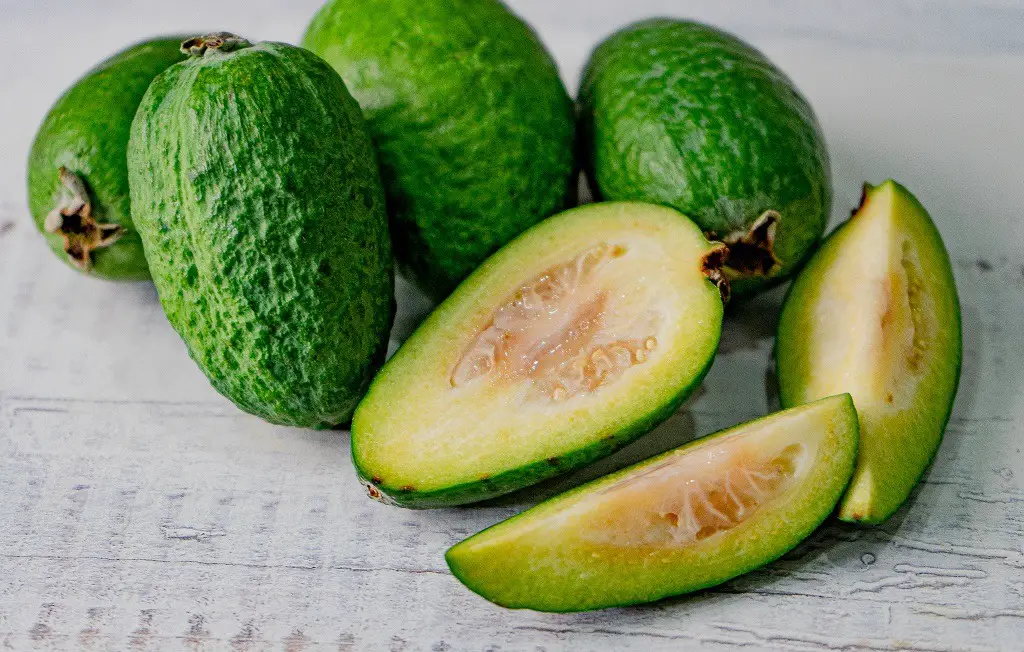
The taste of the feijoa is a blend of a pineapple and apple, with almost an herbal taste as well. The easiest way to eat a feijoa is to cut in half and scoop out the pulpy inside with a spoon.
Papaya (Carica papaya)
The papaya is one of the most recognizable fruits in Colombia, mostly because of it’s unique fleshy inside. Being a very large fruit, many times the papaya is sold by the half or quarter. It’s signature orange flesh and black spherical seeds make this an easy fruit to identify.

The papaya fruit has a unique taste but what is cool in my opinion are the seeds. Many people do not eat them, but they are edible and have a peppery, spicy taste.
Granadilla (Passiflora ligularis)
Another member of the passionfruit family, the Granadilla is my personal favorite. Unlike the purple and maracuya varieties, the granadilla is large with a thin, delicate skin. The best way to eat a granadilla is to just break it open with your thumbs
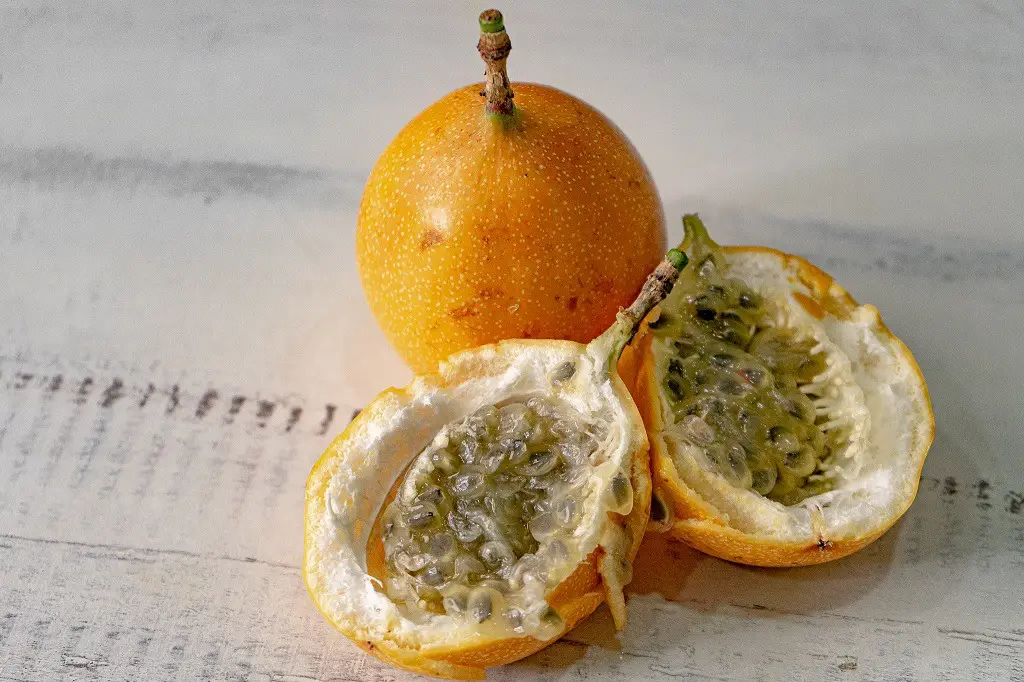
The Granadilla passionfruit is very sweet and delicious, and one that doesn’t need any extra sugar. It has a strong maracuya flavor, but it is easier to eat since you don’t need a knife to cut it open.
Lime Mandarin (C. x limonia)
The Lime Mandarin, or limon mandarina in Spanish, looks like an unripe tangerine. However, the green skin is normal and this fruit, also called the Rangpur Lime, is a cross between a citron and a mandarin orange.
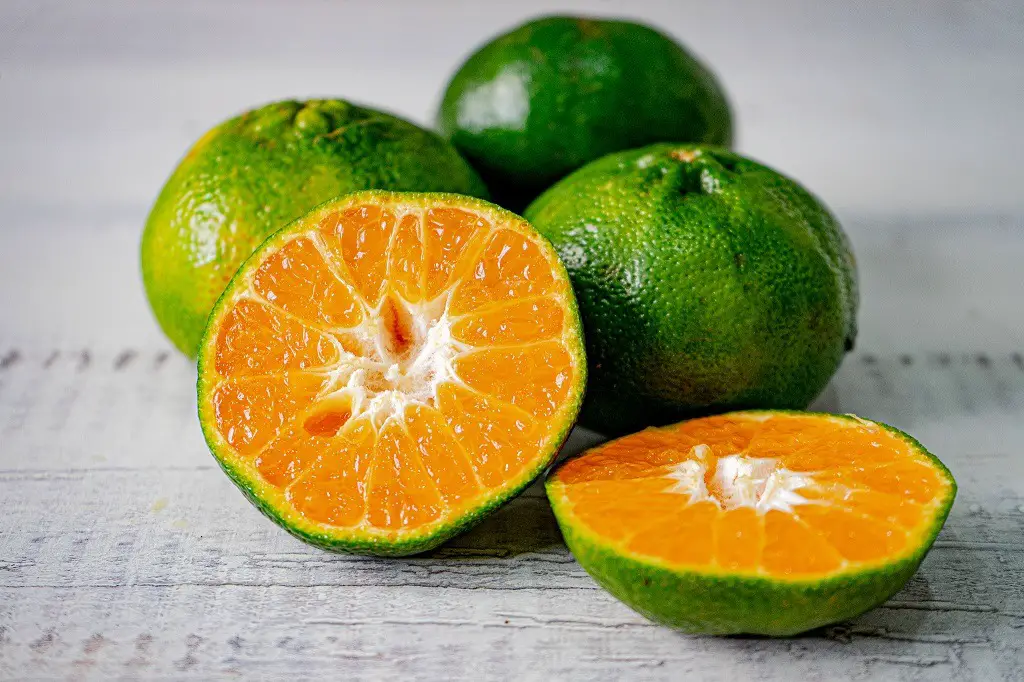
They taste like a more tangy Mandarin, but are just as easy to peel and eat. If you are in Colombia and want a new, yet familiar snack, the limon mandarina is a good choice. They also taste excellent squeezed into a nice wheat beer – but that’s not authentic Colombiana at all.
Higo (Opuntia Ficus-Indica)
The Higo is also known as the cactus fig, or prickly pear, is actually the fruit of a cactus. In fact, this widespread plant is found all over the world in mostly dry, arid places. While this article is about Colombian fruits, many cultures eat the actual cactus as well – called Nopales in Spanish.
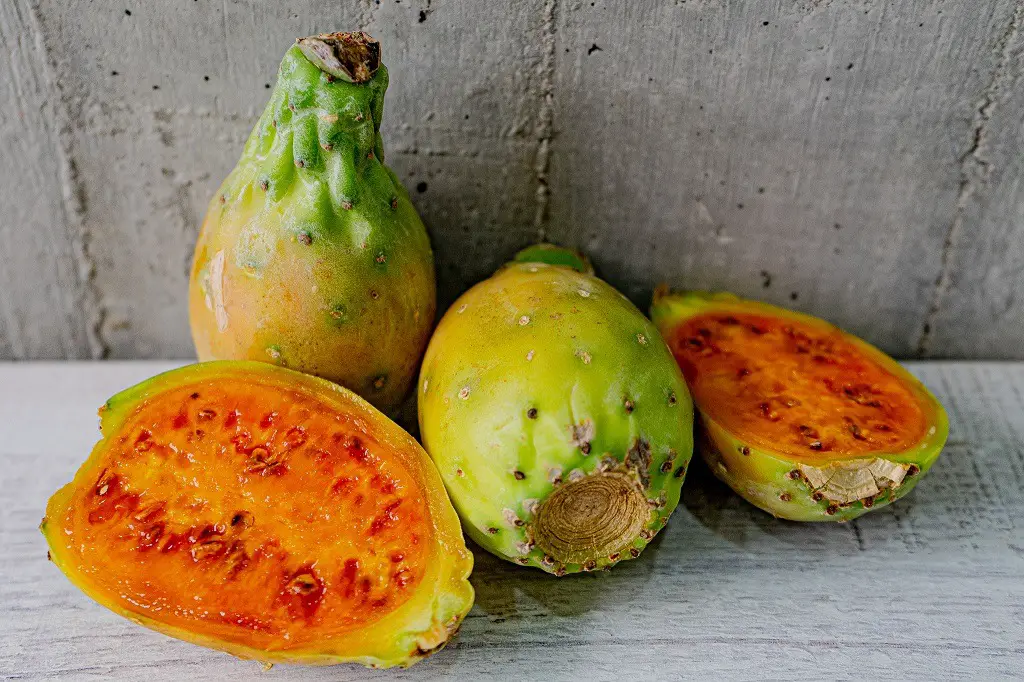
The Higo fruit is quite an easy fruit to eat, but you do have to be cautious handling the outside as there may be some spikes left there. Just cut it in half and use a spoon to scoop out the insides. I find the taste to be a bit sweet but other than that not too flavorful – kind of like a watery melon.
Carambola (Star Fruit)
One of the most interestingly shaped fruits has to be the Carambola, or Star Fruit. The carambola is actually native to South East Asia, but commonly grown in Colombia as well due to the plant’s ability to grow well in the region.
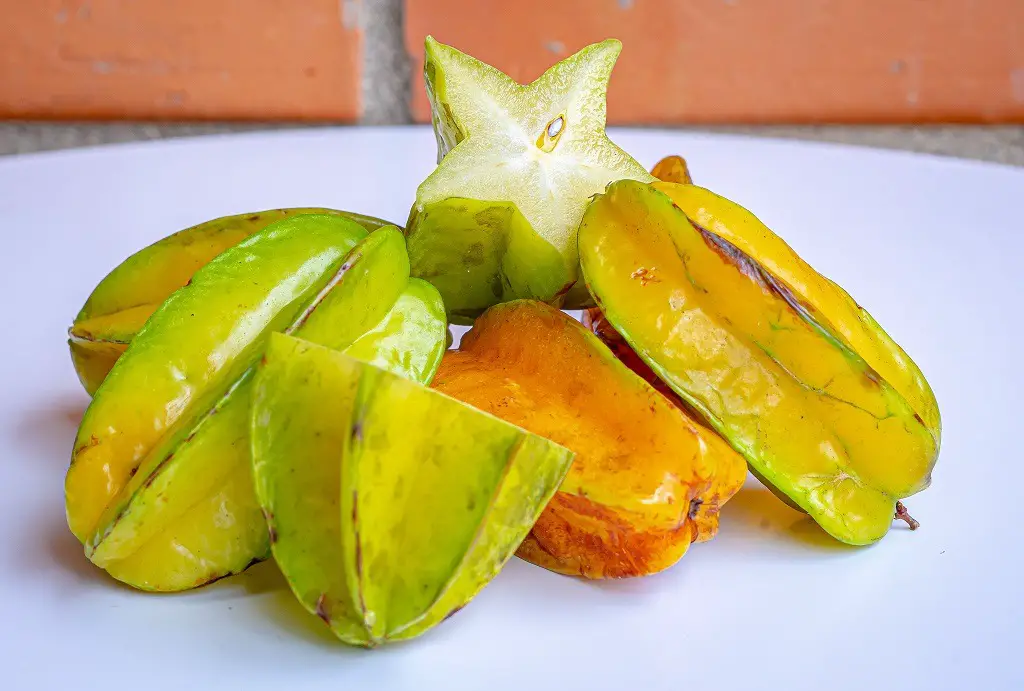
Why is it called star fruit? Well that’s simply a matter of slicing one in half and seeing the common 5-pointed star. Do note that this fruit can also have 6 or even 7 points as well, however 5 is the most common.
Another interesting fact about the Carambola is it is actually slightly poisonous. The fruit contains carambotoxin which can be deadly to people with certain types of kidney deficiencies. However, not to worry, a normal healthy person should show no adverse effects and can enjoy the tart and tangy fruit either raw or in smoothies!
Guayaba (Guava)
Guava is an extremely popular fruit in Colombia and one you will see served in a variety of ways. From raw, in juice, jellied and more, it is one of the most versatile fruits grown in Colombia.
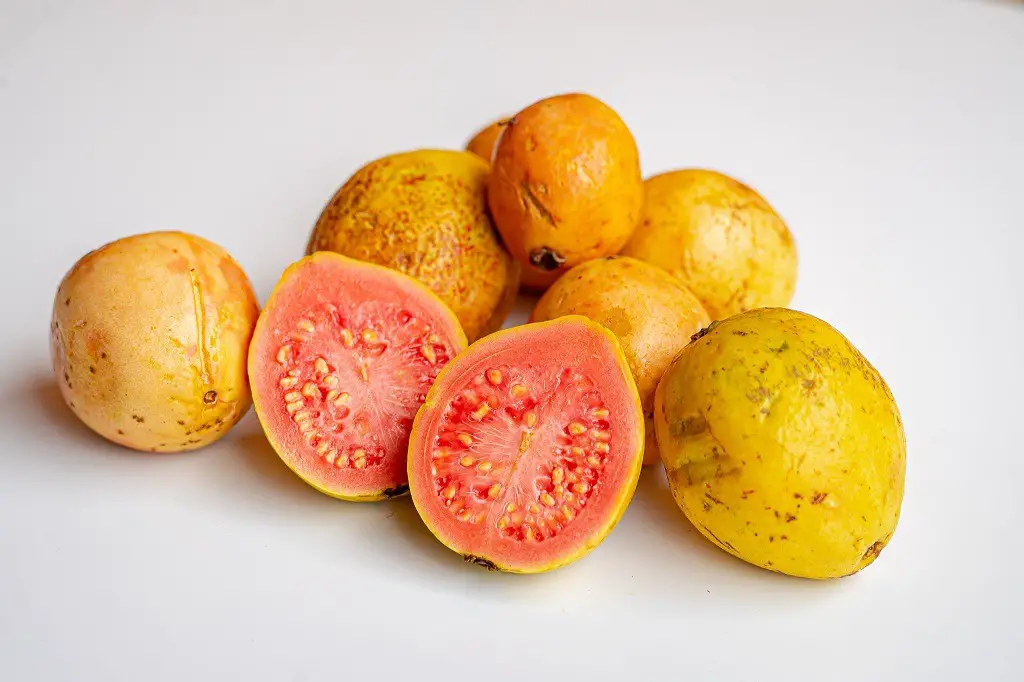
The common guava, also known an apple guava, is a smallish tear-drop shaped fruit with a pink flesh. The skin is considered edible, but many people choose not to eat the skin as well as it can sometimes be bitter.
You can find guava, or guayaba, at many groceries and fruit markets, but my favorite way to eat it is called a bocadillo – a small block of sweet guava jelly wrapped in dry leaves.
Basket Pepper
The basket pepper, aka the Scotch Bonnet, is not a fruit you see on many ‘Fruits of Colombia’ lists, however it is here for a good reason. And that reason is known as San Andres.
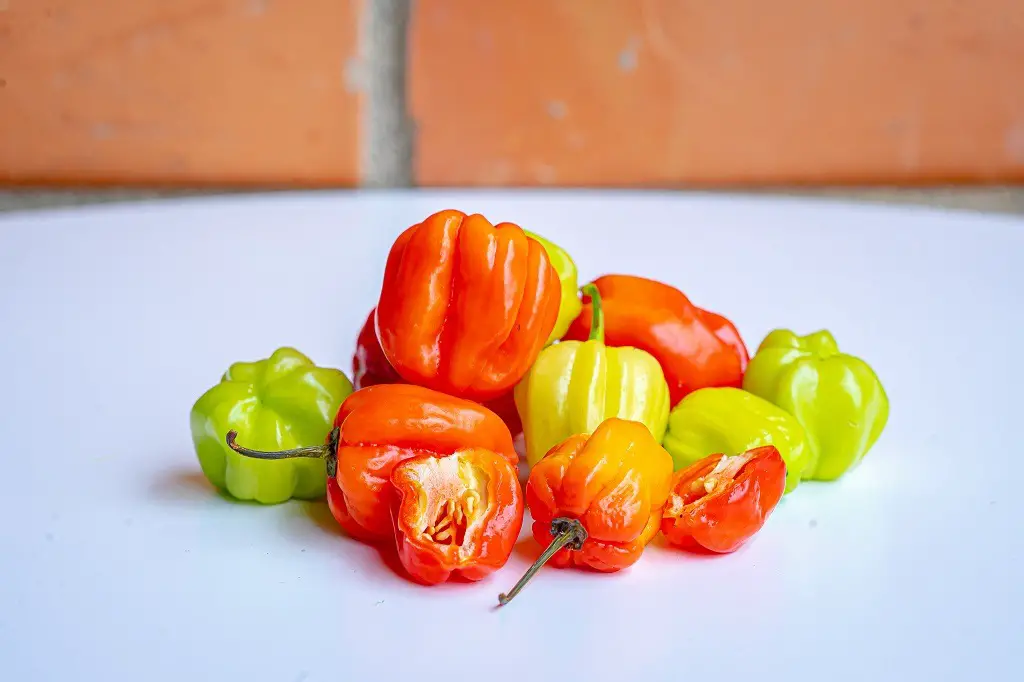
This tiny Caribbean island is actually much closer to Nicaragua than Colombia, yet it is part of Colombia, and as such one of the most popular tourist destinations. The basket pepper is one of the must try fruits of the island, especially if you are a spice fiend.
While they are delicious, they are very, very hot – about 20x more spicy than a jalapeno. That being said, I think they are much tastier and have quite a fruity flavor. Pickled basket peppers are an excellent addition to San Andres local delicacy, rondon.
Mangosteen
Mangosteen is one of my most favorite fruits. While it is grown in Colombia, the fruit actually comes from the Indian subcontinent. However now it is so widespread in many tropical locations it can be considered a Colombian staple.
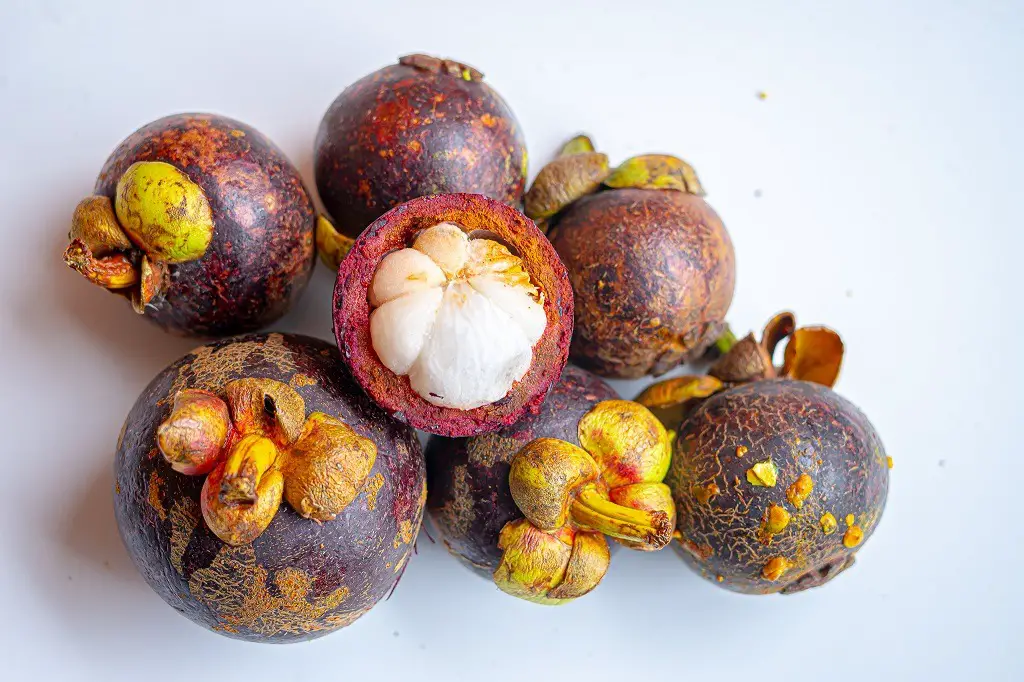
The fruit has a hard rind called an exocarp which is inedible. The easiest way to open a mangosteen is to use a serrated blade, like a bread knife, to cut around the circumference of the fruit. Then simply pop it open and pull out the wedges.
The fruit is mild but sweet and has a very delicate flavor. Mangosteen are expensive in America because they do not ship well, and are usually consumed within days of picking. The fruit itself does not ripen once picked so the best way to enjoy this fruit is in locations where it is grown.
Rambutan
Rambutans are another fruit that originally hail from Asia and now grow plentifully in South America. The fruit is often confused for a lichi, and they do taste similar, however rambutans have ‘hairy’ skins which is an easy way to differentiate them.
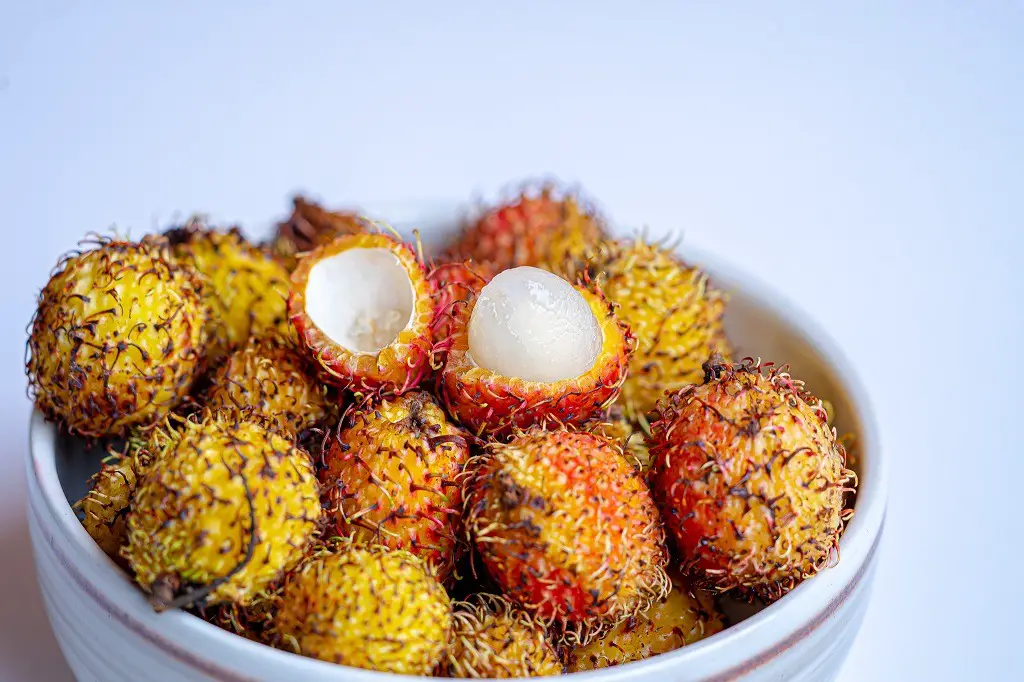
These fruits are sold all over Colombia, but the best place is in Antioquia region, around Medellin. You can easily go pick them at the large fruit markets and the sellers will often allow you to taste one before buying a bag full.
Must Try Fruit In Colombia
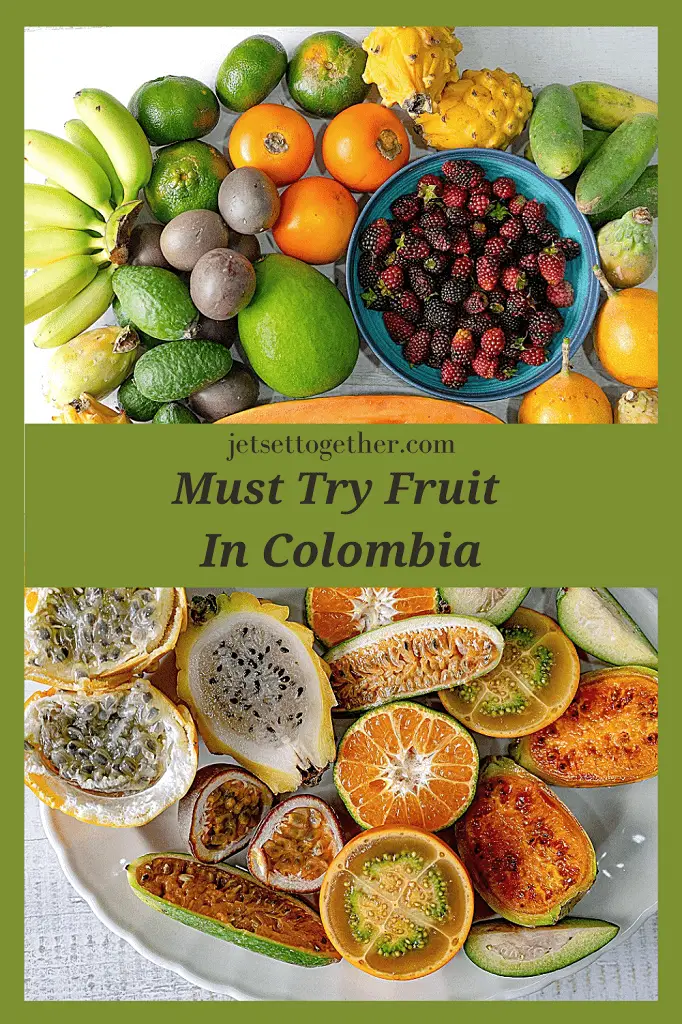
Related Posts
Hotel Review: Paraiso Ayahuasca in Puerto Narino, Amazonas (Colombia)
Puerto Narino is a beautiful village in the Amazonas department of Colombia. There are only…
November 14, 202214 Must Try Colombian Foods
Colombia is a very beautiful country that has everything any tourist can desire. You can…
November 13, 2022

